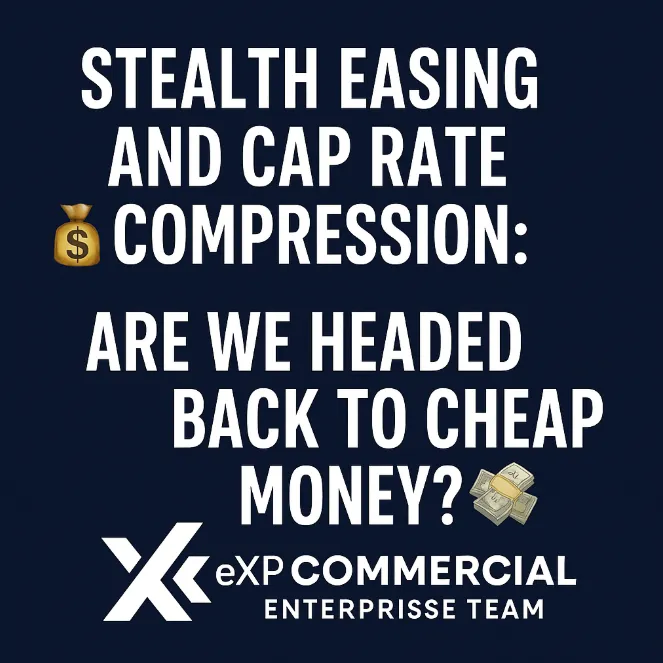Your Trusted Houston Commercial Real Estate Brokerage
Viking Enterprise LLC is part of eXp Commercial, an agent-led, cloud-based commercial real estate brokerage with agents across the globe.
Email: [email protected]
Call: (281) 222-0433
Your Trusted Katy / Fulshear & Houston Commercial Real Estate Brokerage
Viking Enterprise LLC is part of eXp Commercial, an agent-led, cloud-based commercial real estate brokerage with agents across the globe.
Looking to invest, buy, sell or lease? We can help.
Looking to invest, buy, sell or lease? We can help.
FEATURED PROPERTIES




OUR FEATURED TENANTS & CLIENTS
eXp Commercial - Viking Enterprise Team's real estate network provides unparalleled commercial real estate services to Tenants and Landlords around the Katy- Houston area. Our knowledge, experience, and reputation sets us apart from many firms.
A commercial property owner might have various plans that would necessitate the services of a commercial real estate broker. Some of the common scenarios include:
1. Selling the Property: If the owner decides it’s time to sell the property, a commercial real estate broker can help determine the market value, market the property effectively, and negotiate with potential buyers to get the best possible price.
2. Leasing Space: For property owners looking to lease out part or all of their commercial space, a broker can help find suitable tenants, negotiate lease terms, and ensure the lease agreements meet all legal requirements and serve the owner’s best interests.
3. Acquiring More Properties: Owners looking to expand their portfolio would benefit from a broker's knowledge of the market, access to listings, and negotiation skills to secure additional properties at favorable terms.
4. Property Management: While not all brokers offer this service, some commercial real estate brokers or their affiliates offer property management services. This can be particularly appealing for owners who prefer a hands-off approach or are managing properties from a distance.
5. Market Analysis: Owners considering future developments, renovations, or rebranding of their property might engage a broker for a comprehensive market analysis. This helps in understanding current market trends, the demand for different types of spaces, and potential returns on investment for various strategies.
6. Refinancing: In situations where a property owner is looking to refinance their property, a commercial real estate broker can provide valuable insights into the property’s current market value, assist in gathering necessary documentation, and even help in finding the best financing options.
7. Partnership or Investment Opportunities: Owners interested in exploring partnerships, joint ventures, or seeking investors for expansion or development projects might use a broker to find and vet potential partners or investors.
8. Consulting on Zoning and Use Changes: When contemplating a change in the use of the property or dealing with zoning issues, a broker with experience in local regulations and the specific property type can provide guidance and strategic planning assistance.
9. Exit Strategy Planning: For owners looking to plan an exit strategy from their investment, whether it’s through a strategic sale or a gradual winding down of operations, brokers can provide market insights, timing advice, and valuation services to optimize the exit process.
In any of these scenarios, the expertise and services provided by a commercial real estate broker can save the property owner time and money, while also providing access to a wider network of potential buyers, tenants, and industry professionals. Give us a call today!
Reviews

💸 Stealth Easing & Cap Rate Compression: Is Cheap Money Making a Comeback? 💼
💸 Stealth Easing & Cap Rate Compression: Is Cheap Money Making a Comeback? 💼
🏦 Liquidity, Inflation & CRE: Why Stealth Easing Could Compress Cap Rates Again 🚀
Stealth Easing and Cap Rate Compression: Are We Headed Back to Cheap Money?
In the world of commercial real estate (CRE), every investor watches interest rates like a hawk. But here’s a secret most overlook — liquidity injections, not just official rate cuts, often set the stage for the next market rally. That’s what’s happening right now through what many call “stealth easing.”
What “Stealth Easing” Means — Plain and Simple
Stealth easing occurs when the Federal Reserve quietly adds liquidity to the banking system without formally cutting rates. It’s not quantitative easing (QE) or a policy pivot — it’s a soft reinjection of money into the economy through operations like the Standing Repo Facility (SRF). Banks exchange Treasuries for cash, boosting liquidity across the system.
In the past few weeks alone, the Fed has injected over $125 billion into banks to ease short-term funding stress. That’s not a small move — and it’s starting to ripple through asset markets.
Why Liquidity Matters More Than Rate Moves
For investors, what truly drives cap rate compression isn’t always the Fed Funds rate — it’s how much money is sloshing around the system. More liquidity means more dollars chasing the same number of deals. Even if borrowing costs stay flat, this excess cash can:
·Increase competition for stabilized assets
·Push buyers to accept lower yields
·Lift valuations, especially for core CRE assets
In short, liquidity drives velocity — and when capital is abundant, cap rates tighten.
How More Cash in the System Impacts Asset Values
When capital floods the market, investors start stretching for yield. Institutional buyers reenter core markets, REITs become more aggressive, and private equity groups start underwriting future rate cuts into today’s bids. The result? Cap rate compression.
This trend can inflate property values even before official rate cuts occur. It’s a subtle, early-stage bull signal that often shows up in transaction volumes and price-per-square-foot increases.
Which Property Types Benefit Most
Not all sectors respond equally to stealth easing. Here’s who stands to gain first:
·Industrial: Remains a capital magnet due to e-commerce growth and supply chain reshoring. Compressed yields are most visible here.
·Retail: Especially neighborhood centers and service-based strips that benefit from stable consumer demand.
·Multifamily: A natural beneficiary as lower financing costs attract refinancing and acquisition plays.
Medical office and flex industrial may also see early activity due to their hybrid resilience and tenant stability.
Positioning Before the Next Rate Cut Cycle
Savvy investors are already repositioning portfolios for a softer monetary backdrop. That means:
·Refinancing short-term debt while spreads are stable
·Acquiring stabilized assets in strong submarkets like Katy, Fulshear, and Brookshire before competition heats up
·Locking in long-term fixed-rate debt while it’s still available
If history is any guide, stealth easing often precedes a broader easing cycle. Those who act early stand to benefit the most.
Houston Angle: The Submarket Advantage
West Houston’s submarkets — Katy, Fulshear, and Brookshire — are uniquely positioned for this next wave. These areas boast:
·High population growth
·Expanding infrastructure (Grand Parkway, FM 1093)
·Increasing investor interest in stabilized retail and industrial
When liquidity flows back into the system, investors often migrate toward high-income, high-growth markets — and Katy/Fulshear are near the top of that list.
Final Thoughts
Stealth easing may not grab headlines like a rate cut, but it moves markets all the same. As liquidity quietly returns, cap rates could compress, valuations could climb, and competition could reignite. For CRE investors and business owners, now’s the time to prepare for a market that’s slowly — and silently — turning back toward cheap money.
https://www.houstonrealestatebrokerage.com/
https://www.houstonrealestatebrokerage.com/houston-cre-navigator
https://www.commercialexchange.com/agent/653bf5593e3a3e1dcec275a6
http://expressoffers.com/[email protected]
https://app.bullpenre.com/profile/1742476177701x437444415125976000
https://author.billrapponline.com/
https://www.amazon.com/dp/B0F32Z5BH2
https://veed.cello.so/FOmzTty6oi9
https://creplaybookseries.billrapponline.com
https://creplaybook.billrapponline.com/
© 2023-2024 Bill Rapp, Broker Associate, eXp Commercial Viking Enterprise Team
eXp Commercial - Viking Enterprise team real estate network provides unparalleled commercial real estate services to Tenants and Landlords around the greater Katy & Houston MSA area. Our knowledge, experience, and reputation sets us apart from many firms.
A commercial property owner might have various plans that would necessitate the services of a commercial real estate broker. Some of the common scenarios include:
1. Selling the Property: If the owner decides it’s time to sell the property, a commercial real estate broker can help determine the market value, market the property effectively, and negotiate with potential buyers to get the best possible price.
2. Leasing Space: For property owners looking to lease out part or all of their commercial space, a broker can help find suitable tenants, negotiate lease terms, and ensure the lease agreements meet all legal requirements and serve the owner’s best interests.
3. Acquiring More Properties: Owners looking to expand their portfolio would benefit from a broker's knowledge of the market, access to listings, and negotiation skills to secure additional properties at favorable terms.
4. Property Management: While not all brokers offer this service, some commercial real estate brokers or their affiliates offer property management services. This can be particularly appealing for owners who prefer a hands-off approach or are managing properties from a distance.
5. Market Analysis: Owners considering future developments, renovations, or rebranding of their property might engage a broker for a comprehensive market analysis. This helps in understanding current market trends, the demand for different types of spaces, and potential returns on investment for various strategies.
6. Refinancing: In situations where a property owner is looking to refinance their property, a commercial real estate broker can provide valuable insights into the property’s current market value, assist in gathering necessary documentation, and even help in finding the best financing options.
7. Partnership or Investment Opportunities: Owners interested in exploring partnerships, joint ventures, or seeking investors for expansion or development projects might use a broker to find and vet potential partners or investors.
8. Consulting on Zoning and Use Changes: When contemplating a change in the use of the property or dealing with zoning issues, a broker with experience in local regulations and the specific property type can provide guidance and strategic planning assistance.
9. Exit Strategy Planning: For owners looking to plan an exit strategy from their investment, whether it’s through a strategic sale or a gradual winding down of operations, brokers can provide market insights, timing advice, and valuation services to optimize the exit process.
In any of these scenarios, the expertise and services provided by a commercial real estate broker can save the property owner time and money, while also providing access to a wider network of potential buyers, tenants, and industry professionals. Give us a call today!

Find the perfect location for your business.
Let us help your business succeed.

💸 Stealth Easing & Cap Rate Compression: Is Cheap Money Making a Comeback? 💼
💸 Stealth Easing & Cap Rate Compression: Is Cheap Money Making a Comeback? 💼
🏦 Liquidity, Inflation & CRE: Why Stealth Easing Could Compress Cap Rates Again 🚀
Stealth Easing and Cap Rate Compression: Are We Headed Back to Cheap Money?
In the world of commercial real estate (CRE), every investor watches interest rates like a hawk. But here’s a secret most overlook — liquidity injections, not just official rate cuts, often set the stage for the next market rally. That’s what’s happening right now through what many call “stealth easing.”
What “Stealth Easing” Means — Plain and Simple
Stealth easing occurs when the Federal Reserve quietly adds liquidity to the banking system without formally cutting rates. It’s not quantitative easing (QE) or a policy pivot — it’s a soft reinjection of money into the economy through operations like the Standing Repo Facility (SRF). Banks exchange Treasuries for cash, boosting liquidity across the system.
In the past few weeks alone, the Fed has injected over $125 billion into banks to ease short-term funding stress. That’s not a small move — and it’s starting to ripple through asset markets.
Why Liquidity Matters More Than Rate Moves
For investors, what truly drives cap rate compression isn’t always the Fed Funds rate — it’s how much money is sloshing around the system. More liquidity means more dollars chasing the same number of deals. Even if borrowing costs stay flat, this excess cash can:
·Increase competition for stabilized assets
·Push buyers to accept lower yields
·Lift valuations, especially for core CRE assets
In short, liquidity drives velocity — and when capital is abundant, cap rates tighten.
How More Cash in the System Impacts Asset Values
When capital floods the market, investors start stretching for yield. Institutional buyers reenter core markets, REITs become more aggressive, and private equity groups start underwriting future rate cuts into today’s bids. The result? Cap rate compression.
This trend can inflate property values even before official rate cuts occur. It’s a subtle, early-stage bull signal that often shows up in transaction volumes and price-per-square-foot increases.
Which Property Types Benefit Most
Not all sectors respond equally to stealth easing. Here’s who stands to gain first:
·Industrial: Remains a capital magnet due to e-commerce growth and supply chain reshoring. Compressed yields are most visible here.
·Retail: Especially neighborhood centers and service-based strips that benefit from stable consumer demand.
·Multifamily: A natural beneficiary as lower financing costs attract refinancing and acquisition plays.
Medical office and flex industrial may also see early activity due to their hybrid resilience and tenant stability.
Positioning Before the Next Rate Cut Cycle
Savvy investors are already repositioning portfolios for a softer monetary backdrop. That means:
·Refinancing short-term debt while spreads are stable
·Acquiring stabilized assets in strong submarkets like Katy, Fulshear, and Brookshire before competition heats up
·Locking in long-term fixed-rate debt while it’s still available
If history is any guide, stealth easing often precedes a broader easing cycle. Those who act early stand to benefit the most.
Houston Angle: The Submarket Advantage
West Houston’s submarkets — Katy, Fulshear, and Brookshire — are uniquely positioned for this next wave. These areas boast:
·High population growth
·Expanding infrastructure (Grand Parkway, FM 1093)
·Increasing investor interest in stabilized retail and industrial
When liquidity flows back into the system, investors often migrate toward high-income, high-growth markets — and Katy/Fulshear are near the top of that list.
Final Thoughts
Stealth easing may not grab headlines like a rate cut, but it moves markets all the same. As liquidity quietly returns, cap rates could compress, valuations could climb, and competition could reignite. For CRE investors and business owners, now’s the time to prepare for a market that’s slowly — and silently — turning back toward cheap money.
https://www.houstonrealestatebrokerage.com/
https://www.houstonrealestatebrokerage.com/houston-cre-navigator
https://www.commercialexchange.com/agent/653bf5593e3a3e1dcec275a6
http://expressoffers.com/[email protected]
https://app.bullpenre.com/profile/1742476177701x437444415125976000
https://author.billrapponline.com/
https://www.amazon.com/dp/B0F32Z5BH2
https://veed.cello.so/FOmzTty6oi9
https://creplaybookseries.billrapponline.com
https://creplaybook.billrapponline.com/
© 2023-2024 Bill Rapp, Broker Associate, eXp Commercial Viking Enterprise Team
Find the perfect location for your business.
Let us help your business succeed.
9600 Great Hills Trail, Suite 150w Austin, TX 78759 |
855.450.0324 xx255
Texas Real Estate Commission Consumer Protection Notice Texas Real Estate Commission
Information About Brokerage Services eXp Commercial LLC #9010212
Viking Enterprise LLC #9009614

Sign up to receive the latest news on property investment and commercial real estate listings.
Contact Us
901 S Mopac Expwy, Bldg 2, Suite 350 Austin, TX 78746 | 512.474.5557Texas Real Estate Commission
Consumer Protection Notice Texas Real Estate Commission Information About Brokerage Services Reliance Retail, LLC #603091
Texas RS, LLC #9003193 | RESOLUT RE Is Licensed In Louisiana #0995694083


Facebook
Instagram
X
LinkedIn
Youtube
TikTok